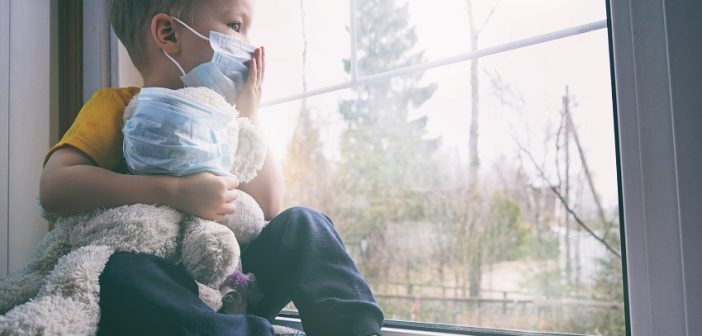While the world is returning to normal following the COVID-19 lockdowns and restrictions, many students are still struggling to recover. Studies show significant drops in math and reading test scores between 2019 and 2021, and educators and parents worry about the long-term impacts on children and college students.
For this reason, schools must realize the impact of the COVID closures on students and take action to help them catch up on their studies. Here are a few ideas to consider:
1. Collaborate for Solutions
Both individual and collective efforts are necessary to help students regroup after long-term remote learning.
For example, the Education (Re)Open program in Los Angeles sought to improve recovery efforts by asking students, educators, parents, schools, and other stakeholders to submit ideas for recovery. Other school systems can benefit from similar programs that seek solutions to help students overcome learning gaps caused by COVID-19.
When people come together to discuss ideas, they’ll hear different viewpoints they may be unaware of. Collaboration helps to identify roadblocks to recovery and find ways to push through them.
2. Elongate the School Day
Most school districts had significant disruptions to their teaching policies during the COVID pandemic. On average, districts closed schools entirely for 20 weeks and had partial closures for another 20 weeks. While most schools introduced remote learning, teachers struggled to adapt their curriculums to the computer. And some classes, like Art and Physical Education, proved nearly impossible to offer online.
Some districts extended their school days upon return to overcome the losses experienced during lockdowns. A more extended school day provides additional time for instruction that teachers can use to reinforce core concepts that students should fully understand. That way, students don’t miss out on fundamental building blocks in future classes.
3. Offer Opportunities for Tutoring
Some students need help grasping concepts taught to them via remote learning. Despite the teacher’s emphasis on a topic, students can find it challenging to understand without additional support. For instance, a 7th grader learning algebra concepts for the first time may not fully understand the various theories used in the course when a teacher can’t use a whiteboard to illustrate them. These problems will only compound when the student must use these concepts in advanced classes (like applying concepts learned in Algebra I to Algebra II and Geometry).
To this end, schools should offer free one-on-one and group tutoring to ensure students don’t get left behind and suffer from lower grades in future years. Parents can sign their children up for tutoring independently, or teachers can recommend it if they see a student experiencing difficulty with core concepts.
4. Offer Mental Health Counseling
The shift from on-site to remote learning was immediate and unexpected. Aside from losing out on in-person learning, students also went months without seeing their peers. Normal activities they enjoyed — like sports and arts — were largely shut down. Unsurprisingly, many students suffered from problems such as depression and anxiety.
While teachers aren’t therapists or psychologists, they can provide a listening ear to students who haven’t fully emotionally recovered from the lengthy shutdowns. They can be there to support their students and encourage them to rejoin their favorite activities and spend time with their friends.
Schools can further benefit students by having a qualified counselor on staff. A counselor can walk them through complex issues and offer strategies to help them overcome feelings of depression and anxiety. If professional help is necessary, the counselor can speak with the child’s parents and recommend trained psychologists or psychiatrists.
5. Listen to Teachers
Teachers are often the first people to know when students have issues. They’ll see when a student’s test scores drop or when children aren’t focusing like they usually do. They’ll also notice trends in their classroom, such as a lack of understanding of a fundamental concept.
Therefore, schools should regularly ask teachers for input as students return to classroom learning. Administrators can use this information to decide whether specific strategies are necessary to address student recovery from the pandemic and how to implement them.
Additionally, teachers who taught remotely should recap their experience with the school’s leadership team. That way, the school understands the hardships the teachers experienced and can better prepare if we need to return to remote learning in the future. For example, many teachers experienced many difficulties adopting their curriculums for online learning. Schools can assist by offering their teachers training for teaching remotely.
Some universities now include courses for remote education as part of their study programs. Established teachers can benefit from attending these classes and adopting strategies for making remote learning successful.
Schools Have a Lot to Learn from COVID Shutdowns
While the brunt of the pandemic has largely come and gone, it’s still impacting student learning today. But thankfully, schools can help their students overcome obstacles associated with gaps in their knowledge by offering free tutoring and mental health counseling. For the best results, schools should collaborate with students, faculty, parents, and other stakeholders to identify potential solutions.





These are extremely effective ways. Recently, the situation of re-translation is quite complicated. Useful articles like this need to be shared widely.
I see a lot of ads on forums about websites with homework helpers instead of you. But some specialists may not take your application to work. Unfortunately, it happens. Specialists may refuse to do the job if it is too complicated or incorrectly worded. To avoid this happening to you, I advise you to use the service https://cwassignments.com/cplusplus-homework-help. There are real professionals who will cope with the task of any complexity and in the shortest possible time.
Now we can say that the problem is going away a little, but the world has adapted well to the new conditions, in particular in the field of education. You can see many educational projects like https://onlinecollegewriting.com/ that help students complete their education
I’m happy to chat on your blog, and it seems like I should be looking forward to more dependable content. I believe that all of us would like to thank you for sharing so many fantastic articles and blogs with us.